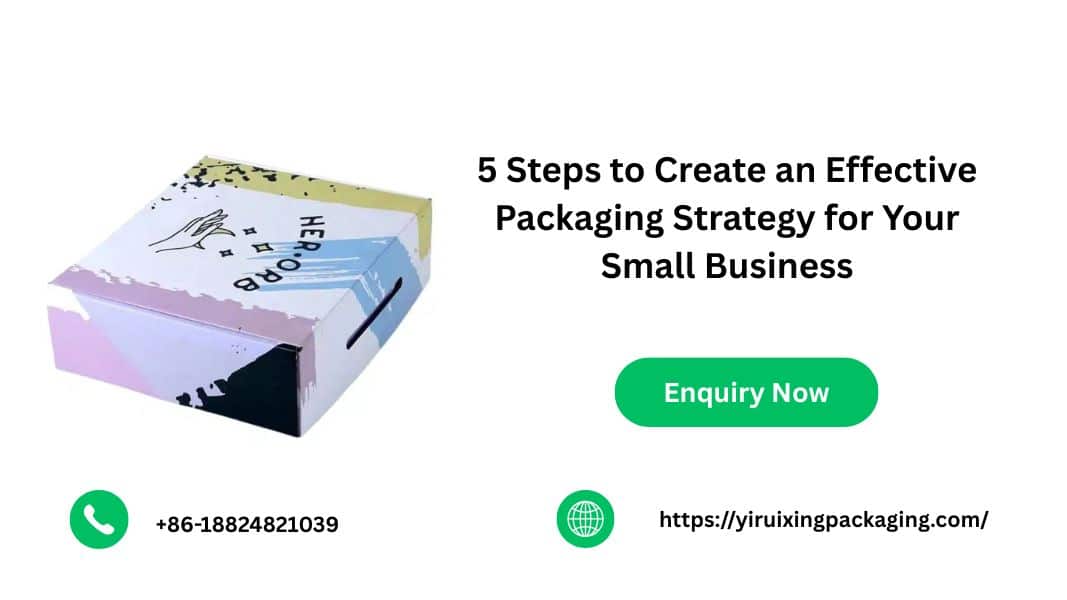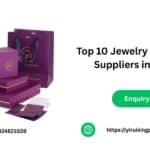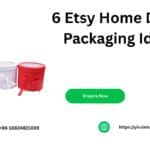5 Steps to Create an Effective Packaging Strategy for Your Small Business – If you operate a small business, you already know how much first impressions matter. And when it comes to your product, the first thing customers see is not always the product itself; it is the packaging. The right packaging doesn’t just protect what is inside, it tells your story, shows your personality, and can even convince someone to choose your product over a competitor’s.
Table of Contents
ToggleSo how do you create packaging that works for both your brand and your budget? Let’s break it down into 5 steps to create an effective packaging strategy for your small business.
5 Steps to Create an Effective Packaging Strategy
1. Establish Your Brand Identity
Consider your packaging to be your brand’s outfit; it should complement the style, tone, and vibe you wish to convey. Before you start making decisions about colors or materials, establish what you want your brand to stand for. Ask yourself –
- What principles do I want my business to uphold?
- What emotions do I want customers to feel when they see my product?
- Who am I hoping to connect with?
So, if you truly care about promoting a sustainable way of living, then it might be logical to consider using recyclable kraft paper and earthy tones for packaging. If you’re building a luxury brand, you might consider the look of the packaging to be more sleek in style, use embossed logos, or even metallic finishings. When your packaging showcases your brand identity, the brand gets to feeling more authentic quickly.
2. Get to Know Your Customers
Remember, your packaging is not for you; it’s for the people who are buying your product. The better you know them, the easier it will be to design packaging for them to love. Think about –
- Who are they? Are they busy parents, lifestyle students, or uptown shoppers?
- What is important to them? Is it sustainable, convenient, or does it all come down to price?
- What stands out to them? Bold colors, clean designs, or fun graphics?
Imagine you sell health snacks to young professionals. A clean, modern design with resealable packaging would possibly win them over. On the other hand, if you are selling toys, bright colors, and playful characters would speak directly to kids and their parents. When your packaging clicks with your audience, it makes buying feel like the obvious choice.
3. Don’t Forget Functionality
Looks matter, but packaging is not just about looks. At its core, it needs to do its job – protect your product and make it easy for customers to use. Nothing kills excitement faster than a damaged item or packaging that is frustrating to open. Keep these in mind –
- Select materials strong enough to handle shipping
- Keep the size and shape practical; oversized boxes cost more to ship
- Make it user-friendly. Can people open, carry, or reseal it easily?
- Double-check legal requirements like nutrition labels, safety information, or warnings.
For instance, if you sell coffee, resealable bags keep it fresh and make customers’ lives easier. If you sell glass items, sturdy boxes with proper padding are non-negotiable. Good functionality builds trust because customers know they will get their product in good condition every time.
4. Design with Impact
Your packaging design is often what stops people in their tracks, or scrolls, long enough to think about buying. A good design is attractive, but also clear and consistent with your brand. Here is what to focus on –
Colors – They trigger emotions. Bright – playful and energetic. Neutral – calm and elegant.
Fonts – Choose something easy to read but aligned with your brand personality.
Images or Graphics – Tell a story visually.
Consistency – Keep your brand colors, logo, and messaging the same across products.
Clarity – Customers should instantly know what your product is and why it matters.
For example, a handmade candle brand might use soft pastel packaging with simple, calming fonts. A small-batch hot sauce business might go bold with fiery reds and playful illustrations. The design should grab attention while staying true to your identity.
5. Balance Cost and Sustainability
As a small business owner, your budget matters. Packaging has to make financial sense while still supporting your brand’s image. The good news is, you don’t have to sacrifice quality or sustainability to save money; you just need to be strategic. Some tips –
- Buy materials in bulk when possible
- Right-size your packaging to cut shipping and material costs
- Search for recyclable, compostable, or biodegradable options
- Partner with suppliers who have a specialty in eco-friendly packaging.
Customers are paying more attention to sustainability than ever before. Even small changes, like swapping bubble wrap for recyclable paper filler, show your customers that you care about the planet. And that kind of detail can set your brand apart.
Conclusion
Creating an effective packaging strategy doesn’t just hold your product; it tells your story, builds trust, and creates an experience your customers remember. For a small business, that can make all the difference in standing out and growing loyal fans.
FAQs
Why does packaging matter so much for small businesses?
Because it is often the first thing customers see. Packaging protects your product, communicates your brand, and can impact buying decisions. For small businesses, it is a powerful way to stand out against bigger competitors.
How can I keep packaging eco-friendly on a budget?
Start small, turn to recyclable materials, right-size your boxes, or use biodegradable filler. Various affordable, sustainable options are available, and small changes can add up over time.
What is the biggest mistake to avoid with packaging?
Overcomplicating it. Fancy designs or oversized boxes might look good, but they confuse customers, waste materials, or cost too much; they will hurt more than help. Always balance style and practicality.
How often should I refresh my packaging design?
Most small businesses refresh their packaging every 2-3 years, or when customers trend shift. You don’t want to change so often that you confuse your customers, but updating keeps your brand looking fresh and relevant.





